Best SEO Keyword Research Tips for Maximum Traffic 2019-2020
1. What is keyword research in SEO?
Keyword analysis is that the method by that you analysis widespread search terms folks kind into search engines like Google, and embrace them strategically in your content so your content seems higher on a look engine results page (SERP). Keyword analysis may be a basic application in program improvement (SEO).
The keyword analysis method involves choosing a subject for your content that's centered on a collection of targeted keywords that you simply wish your content to rank for.
The History of Keyword Research
SEOs have performed keyword analysis for algorithms since 2005. however, keyword analysis as an application has evolved a great deal since then. currently, search engines place literary content aligned with search intent once ranking content. Keyword density (how typically you place a keyword in your content) is not any longer the foremost necessary issue for program improvement. Keyword analysis techniques have tailored and still adapt to changing program algorithms.Generally, keyword analysis takes place within the early stages of campaigns and every now and then lays down a foundation for future comes, campaigns, or content. you'll be able to use keyword analysis to assist you to create mentally around a brand new piece of content you're writing, to assist you to choose the way to name your product options or to optimize your web site when published.
Of course, keyword analysis methods disagree from tiny business to enterprise -- however, we’re aiming to take a glance in the slightest degree kinds of best practices that may improve your ability to seek out the correct keywords for your audience at the correct time.
The Buyer’s Journey Defines Your Keyword Journey
Identifying your purchaser personas and your buyer’s journey to buy could be a sensible business initiative and may assist you to decide what keywords you must target for items of content you intend on writing. The buyer's journey is vital for several groups in your organization, not simply your promoting team. Your sales team can have a better time deciding the way to approach a chance or potential client if they'll establish wherever they're within the buyer's journey.Since every user has their own distinctive journey, sorting out what their demographics, intent, and goals square measure will yield many various keyword ranges for your use. that is why it is important to form a content map. Your content map plots your purchaser personas and your buyer's journey stages on a map and can show you which ones personas or buyer's journey stages you will write further content for.
Let’s explore a B2C journey: a user UN agency needs racecar elements goes to own a far totally different search behavior than a user searching for racecar toys for his or her kid. however, since they need similar keywords, it’s vital to know your purchaser personas, therefore, the terms may be simply found for each party.
SEO Keyword Research Process
Once you have got your outlined personas, you wish to make a thought for the keywords you already rank for and keywords you wish to rank for.A good simple structure to follow is that the PIE methodology. It’s one thing we have a tendency to advocate to our customers at the start of our onboarding method.
The term PIE, during this instance, stands, for a shield, Improve, and Expand.
The shield portion worries with keywords that you just already rank for and need to stay latched in their position. fast samples of these would come with whole names and keywords that area unit closely associated with your product or service. they area unit they're usually late-stage, therefore, conversions with these keywords are extremely valued.
The Improve portion deals with chance keywords wherever you rank within the second to tenth Google search result pages. These area unit nice “low hanging fruit” keywords that you just will increase in authority with tweaks to the pages.
Finally, Expand is for the chance terms that do nicely in PPC however don't have any visibility in organic. These area unit keywords that don't rank within the high 10 pages on Google. They additionally embody new campaign keywords that you just need to boost your arsenal.
Bucketing them during this method, you'll rate it slowly supported gaps that you just realize from this analysis. From there, you'll begin your keyword cerebration.
Keyword Research Best Practices
1. Searches Related To & People Also Ask
Along with learning the way to do analysis with Google Keyword planner, here area unit other ways that Google offers United States clues.First, we've got the search box itself. this provides you clues to keywords intimately associated with your search that individuals area unit trying to find. they're additionally time-sensitive as Google solely fills them in supported recent trends and search volumes.
The “Searches connected to…” Section any expands upon these keywords. Clicking on them will offer you even additional connected keywords permitting you to make a keyword matrix that we are going to discuss any down.
2. Wikipedia’s Table of Contents
Wikipedia encompasses a treasure of knowledge on topics. Its moderators do a good job of keeping the posts up so far with new content and relevant links. The table of contents on the facet offers nice info on classes that are written regarding shut keyword connexion to the topic matter.Clicking through these will offer you further topics to feature to your keyword chase.
3. Competitive Content Gap Analysis
Google Keyword Planner incorporates a nice operate wherever you'll submit a landing page and obtain the keywords associated with it. If you have got a particular topic in mind, you'll input the highest competitors for the term and see what supplementary keywords they mapped that page with.For the instance below with racecar elements, we tend to input the highest-ranking address and located the keywords listed on Keyword Planner.
How to Build a Keyword Matrix with LSI
Latent linguistics categorization (LSI) is a stimulating topic in relevancy SEO. a standard keyword analysis set up usually contains a list of keywords aboard their volume associated competition thus an SEO may decide and select looking on those two metrics. LSI adds a replacement dimension by giving supplementary connexion from locally relevant keywords. The Google and Wikipedia examples show simply out there ways in which to making an excellent keyword matrix.Here are things to keep in mind when creating a keyword matrix:
1. When it Comes to Keywords Choose Quality Over Quantity
Now that you just have a good keyword matrix, you’re wanting to seek out the sweet spot with keyword competition and search volume. If the keyword is just too general, they’ll seemingly be too diluted, and though hierarchic for that keyword, the searcher might not convert as they're searching for specific things. At Conductor, we’ve found that victimization 2 to 3-word keywords bring the North American nation the largest success.Google Panda has hit several websites for victimization low-volume keywords and making many pages. Build ten well-optimized pages versus a hundred that you just could sacrifice quality on.
2. Avoid Broad Single Word Terms
Consider the last time you searched for one thing on Google with the one-word term. Did you get the result you were trying for? Single-word terms area unit typically too broad and too competitive and notwithstanding your rank, you may not convert your traffic.3. Avoid Longer Tail Keywords
The longer your keyword is a lot of specific niches you're making an attempt to achieve. Larger than four keywords will extremely specialize your content however the recognition can decrease even as steady, reducing search volume.4. Find the Sweet Spot
The only issue that’s left is that the intermediate, which incorporates 2 to 3-word phrases. Supplement these with the keywords from your LSI Keywords and build the page with article best practices and you must see nice results.2. How to Do Keyword Research in 2019 for Maximum Traffic
Keyword analysis isn’t near to selecting high volume search terms, building links, and ranking for that single keyword alone. it's the inspiration of a decent SEO campaign.
When done right, this elementary SEO activity will facilitate rank your pages for additional keywords and consequently get you additional traffic.
On Gregorian calendar month twelve, I tempered a sponsored SEJ ThinkTank webinar bestowed by SAM Ohio, Director of Product Education at Ahrefs.
Oh shared tips about however you'll notice and select keywords and topics that may manufacture the foremost organic search traffic for your web site victimization Ahrefs.
Here’s a recap of the webinar presentation.
Keyword Research Fundamentals
Back within the day, life was easier for SEO professionals.We used Google Keyword Planner to seem up widespread keywords and make dedicated pages around every keyword (despite them being primarily identical search query).
At the time, this type of maneuver worked. on the other hand, Google took away keyword-level information in September 2013.
Today things area unit significantly totally different.
Last year, Ahrefs studied three million random search queries and located that a #1 ranking page will rank for nearly one,000 relevant keywords within the high ten search results.
This finding shows that there’s no fastened limit on the number of keywords a page will rank for.
Search Volumes Are Misleading
Search volume isn't a decent indicator for search traffic.You can have a high search volume for a keyword, however, this doesn’t essentially mean you get a high variety of clicks.
For instance, the question [Donald Trump age] contains a search volume of fifty-one,000 monthly searches within the U.S., however, the truth is that there square measure solely seven,200 clicks that happen on the search results page every month.
This means that for this question solely ~14 % of searches get clicked. this is often as a result of the SERPs for this question has a solution Box and there's no purpose for the searcher in clicking anything.
Search Volume/Traffic vs. Search Intent
When distinctive that keywords to focus on, you’ll usually face this common conflict: Search Volume/Traffic vs. Search Intent.Search intent nearly always wins.
So once researching and selecting keywords to form content around, you would like to raise yourself this question:
What is the searcher searching for and may I fulfill that intent?
Search Intent Categories
There are four main categories for almost any search query with clear intent:- Informational: How-tos, Whats (i.e., how to make slime)
- Navigational: Branded Queries (i.e., facebook, BOA login)
- Commercial investigation: Specific Attributes, “vs”, “best” (i.e., brown shoes for men size 11)
- Transactional: Buy, Download, etc.
To identify search intent, it’s best to learn from Google.
For instance, searching for the following queries will often produce the following types of results:
In general, the simplest thanks to contending for a keyword is to envision the content form of the highest-ranking pages and imitate it.
Word of caution: search intent isn’t invariably this clear.
There square measure volatile SERPs that, in general, might not need as several links. However, holding rankings on these sorts of SERPs is unpredictable.
On the opposite hand, there are stable SERPs that will probably need a lot of quality links than the competition and wherever holding position is usually a lot of predictable.
How to Find Keywords That Drive Tons of Traffic & Which You Can Rank For
Targeting long-tail topics will assist you rank and drive traffic to your web site.Note that long-tail keywords aren’t regarding “word length.”
Long-tail keywords square measure search queries with low individual search volume, however sometimes have a large total search demand as a gaggle.
Finding long-tail topics comes all the way down to 2 things:
- How much search traffic will a page get?
- Which keywords contribute to #1 and the way many?
The easiest thanks to notice long-tail topics is to appear at your competitors’ traffic generating pages.
You can do that by victimization Ahrefs’ web site mortal.
Type during a competitor’s name and head to the “Top Pages” report.
- Traffic: This gives you an indication of how much search traffic you can actually get by ranking for this topic
- Keywords: The number of keyword rankings it can possibly give you.
- Top keywords: This gives you insights into the parent/main topic.
- It's volume.
- Position.
The “Position” and “Volume” filters work well on authority sites.
You can set to search out solely keywords that rank in positions one-3 and keywords with a pursuit volume of 1,000 or a lot of.
You can conjointly change that Search volume filter supported your niche.
You can conjointly look into the “Volume” to envision the whole international organic traffic to the page.
Just click on the mark beside the universal resource locator and you’ll get an inspiration of the actual page’s traffic potential.
After you’re done rummaging through one contender, you'll be able to visit the “Competing Domains” report back to see different domains around the internet that you simply have common keyword rankings with.
You can see that there’s no shortage of topics, but can you rank?
9-Step Keyword Research Process
1. Check the Search Volume, Clicks & Traffic Potential
Check your chosen topic’s search volume, clicks, and, additional significantly, traffic potential on Ahrefs’ website human to judge your probabilities of ranking.2. Look at Your Competitor’s traffic-generating Pages
Look at your competitor’s traffic-generating pages to seek out topics that have traffic and/or business potential.3. Identify Search Intent for Your Keyword (Via Google)
Identify the search intent for your keyword target by analyzing the highest ten Google search results for the question.4. Determine If You Can Fulfill Search Intent
It then comes all the way down to the question: are you able to serve search intent?- If your answer isn't any, move on.
- If your answer is affirmative, then assess the ranking problems.
5. Manually Assess Ranking Difficulty (Link Profile + On-Page)
While Ahrefs provides a Keyword Difficulty score (a weighted average of the number of linking domains to the current top‐10 ranking pages plotted on a logarithmic scale from 0 to 100), you should assess keyword difficulty manually for best results.Make sure to evaluate the link quality and on-page factors on the top-ranking pages for your chosen topic.
Will you be able to build better/more links than them?
One caveat: Links aren’t everything.
The goal is to rank high for just as many keywords (or more) to maximize search traffic, and this usually boils down to content.
Write about whatever Google deems is “rank-worthy” for that topic.
Google’s job is to serve search intent best. So that, too, becomes your job.
6. See Which Common Keywords the Top 3 Pages Rank for (Content Gap Analysis at Page Level)
The common usage for content gap analysis is to look for a few of contender keyword rankings then verify the keywords they rank for and that you don’t.But after you do content gap analysis at the page level, you’re planning to get extra insights.
Using Ahrefs’ Content Gap Analysis tool, enter high|the highest 3 ranking pages for your target keyword then check the box that says “At least one in all the targets ought to rank in top ten.”
Leave the section “But the subsequent target doesn’t rank for” blank simply because you’re attempting to seek out common keywords among the highest 3 ranking pages for your target keyword.
Click on Show Keywords and you’ll see common pages that these pages rank for.
This makes your job a bit easier.
7. Outline/Content Around These Keyword Rankings
Rather than gazing the keywords you found on the Content Gap Analysis tool as merely a “list of keywords,” use these terms to make a top-level view for your content supported however Google sees intent.For instance, if you’re gazing “Best Watch Brands” as your target keyword, you’ll get the subsequent connected keywords on the Content Gap Analysis.
8. Build Links
Building links to your freshly created content will facilitate boost your organic search traffic considerably.9. Rinse & Repeat
Repeat the process and iterate as needed.3. The Lazy Writer’s Guide to 30-Minute Keyword Research
You, a content marketing ninja, can wield immense SEO reach with your content in ways most SEOs (*cough* like me) can only dream of.BUT, you’re not leveraging keyword research to your advantage!
The fact that you can discover how many people per month are searching for something, what words they're using, and what questions they're asking still blows my mind!
Keyword research doesn’t have to be a marathon bender. A brisk 30-minute walk can provide incredible insights — insights that connect you with a wider audience on a deeper level.
Why keyword research is essential [Case Study]
My previous company, Pryde promoting, wasn't based on out-of-this-world high-quality content. it had been based on leverage on-line knowledge strategically for personal medical practices.When we were employed ANd do} keyword analysis for an imaging company, we tend to discover that many folks a month were looking out “open vs closed MRI” however nobody was providing any smart answers, content, or photos for these searchers.
We determined to form AN "Open Vs. Closed MRI" page for our consumer that, to our surprise, continues to examine over double the traffic of the homepage. Plus, it's brought in over 50k+ distinctive guests.
We weren't self-made as a result of we tend to thought of this content plan.
We tend tore self-made as a result of we listened to the keyword knowledge.
5 keyword research hacks in under 30 minutes
Example client: Hunter & Company (Wedding & Event Planning)Objective: Write higher content for his or her web site and assist with digital promoting efforts.
#1: Blog category keyword research
Having 5 to 10 data-driven diary classes will assist you rank for common topics, permit readers to search out a lot of relevant content, and facilitate to arrange your diary.Evaluate top industry websites (10 mins)
Identify the most common navigation items and blog categories on leading industry sites.
Advanced search operators (3 mins)
While exploring top websites, you can use advanced Google operators to dig deeper.
Example: Bride.com has topic pages like /topic/wedding-beauty. To view, all of Bride.com’s topics search this: site:brides.com/topic
Google Suggest (10 mins)
Google "wedding" and don’t hit enter!
Instead, create note of the drop-down search suggestions. you'll conjointly search "wedding a" [don’t hit enter], "wedding b" [don’t hit enter], all the manner through to z to urge the foremost widespread and/or trending wedding-related searches.
Now that we've got collective keywords from the higher than ways, we've got a solid list:
wedding venues, wedding photographers, wedding DJ, wedding beauty, wedding videographers, wedding bands, wedding budget, wedding invites, wedding register, wedding colours, wedding decorations, wedding, wedding concepts, bridecakes, wedding centerpieces, wedding hairstyles, wedding bouquets, engagement rings, wedding dresses, maid of honor dresses, mother of the bride dresses, wedding rings, flower lady dresses, wedding accessories, wedding jewellery, wedding tuxedos, wedding register, marriage, reception, wedding cake, wedding food, wedding favors, wedding flowers
Keep up the pace — we have a tendency to can’t stop here!
Next, let’s verify that classes square measure the hottest by average monthly Google searches.
There square measure 2 primary tools to look at average monthly search volume (AKA to understand what percentage times a question like “wedding flowers” square measure searched per month): Google Keyword Planner and Moz Keyword somebody. (Check out GKP vs. MKE to find out a lot of.)
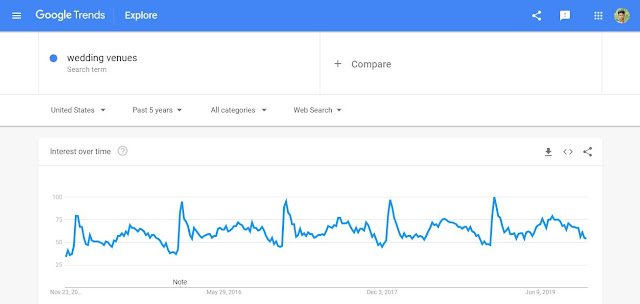

#4: Expand your keyword reach
Expanding your page’s topical content can expand your digital SEO reach. this can be why you’ll see definitive guides like Moz’s Beginner’s Guide to SEO ranking thus well and for such a large variety of keywords (~1,665!).
Download MozBar (Chrome add-on) (1 minute)
Step 1: Activate MozBar. Enter in your primary keyword and click on “optimize.”
Step 2: Click “On-Page Content Suggestions”:
Step 3: read the 23+ content integration concepts for your webpage:
Decide which topics you want to integrate (5 mins)
You ne'er need to force non-relevant content onto a page for SEO reasons. Instead, peruse the topics and admit which might offer price to your readers.
Then, devise an inspiration to naturally integrate those topics into the page’s content.
Topic integrations for constellation & Co. homepage:
- Wedding Planning Checklist (create a checklist page that’s linked to from homepage)
- Wedding Vendors (confirms our popular page strategy! Add a page link from the homepage)
- Wedding Venues
- Couples
#5: Keep up with Google
We square measure seeing a giant rise in "no-click" Google searches.
No-click searches occur once people hunt for one thing and notice their answer, while not ever having to click on a pursuit result.
Example: If you search “Denver weather,” Google can show you associate 8-day weather outlook for Mile-High City. Most searchers square measure happy thereupon and leave, leading to a no-click Google search.
No-click searches square measure rising as a result of Google continues to produce searchers answers at intervals search options like featured snippets (answer boxes), folks conjointly raise boxes, data graphs, weather forecasts, etc.
Know which search features show up most often for your keywords (5 mins)
Knowing that search options occur most often for your product/service-related searches will assist you to steal search options by optimizing for them. detain mind that if you are ranking on page one or 2 of a desired featured snip search, you are higher positioned to steal that featured snip than if you were on page 3+.
Remember our FAQs regarding “wedding planning” above? 24 of twenty-eight queries found in Moz Keyword individual have featured snippets (answer boxes) in their search results:
RealSimple presently incorporates a giant featured snip for “wedding checklist”:
Looking a lot of closely into that page, you’ll notice RealSimple’s check-box markup and definitive vogue content.
Brainstorm a better (and more useful) wedding checklist (10 mins)
- Hire a contract developer to make a gorgeous, printable wedding list calendar that, once a reader enters their wedding date, populates with regular to-dos.
- Create associate degree IFTTT (If This Then That) direction to schedule Google Calendar disorder Reminders supported the user’s wedding date.
- Provide a lot of care and a lot of lovely wedding list.
3. How To Use Keyword Research To Find New Blog Post Ideas
1. How to Find Blog Post Ideas Using Keyword Research
There’s a careful balance between content that's optimized for search engines and content that's optimized for your users. putting this balance involves associate understanding of what individuals need to examine, associated an understanding of SEO.
Both of those things begin with keyword analysis, as any SEO services within the USA can tell you. This information helps you higher perceive however you'll be able to approach specific topics and profit in each engagement and rankings. Let’s take a glance at my method for victimization this technique as a method of refueling your journal post concepts.
Step 1: Seek Out Your Audience
When you perform keyword analysis, you would like one thing to travel on. a subject or conception for instance. you've got a distinct segment that your weblog focuses on, which will work utterly, however, if you wish this method to figure within the semipermanent you would like to require that seed and let it grow.
Let’s say your weblog is concerning fashion. This perpetually dynamical trade is often ripe with new content ideas, particularly on social media. begin by heading on-line to your typical platforms like Facebook, Twitter, and Pinterest. Perform searches close to the newest fashion trends and appearance at the highest acting content.
You should additionally look into your competition and see what they need been posting recently. you will even discover new competitors you didn’t understand before. Take these sites and plug them into a tool like Buzzsumo. whereas the free version of this tool will solely be used once per day, it permits you to check that content is acting the most effective for your competitors on social media.
Write down a number of these broad ideas as you’ll want them later. At now, you only got to grasp what your audience is talking concerning
Step 2: Perform Your Research
Now that you simply have some topics and ideas, the following step is to perform your keyword analysis. I even have many tools I prefer to use, however these square measure the highest two:
- Google Keyword Planner – This tool permits you to enter basic ideas and acquire keyword suggestions supported what you entered. You’ll additionally get to check search volume, which is nice for deciding however common a subject like which will be. Don’t forget to seem for long-tail keywords as these have nice potential and low competition!
- Keyword.io – This tool is unbelievable for data. A free account is all you would like, then you'll be able to enter a really broad topic. this may generate heaps of autocomplete suggestions and keywords for you to contemplate. a favorite tool of mine!
As you discover keywords that have gotten traction, you’ll conjointly notice that these keywords represent topics for you to use in your posts.
Now, time for the ultimate step!
Step 3: Put Your Ideas Together
Think of your keywords like puzzle items. the ultimate step is to ascertain however all of them match along. You little doubt came up with many alternative topics that might presumably match along. produce your own posts supported the keywords that area unit operating, and analysis them more to search out even a lot of content to inspire that concept.
Every time you begin to run out of keywords, you'll repeat this method once more to search out new ones. similar to that, you have got Associate in Nursing endless fountain of inspiration!
Final Thoughts
Keyword analysis is that the foundation of fine SEO, however, it also can be wont to pinpoint topics that ar performing arts well and being searched by folks in your audience. Now, if solely you may realize the time you wish to jot down all of those diary posts!
How do you come up with blog post ideas? Have you tried this clever process?
Please let us know in the comments!
More Tips:







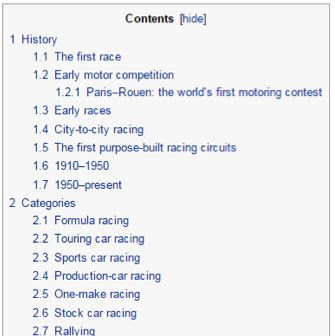
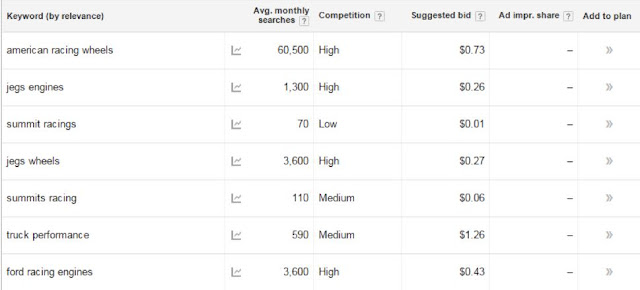






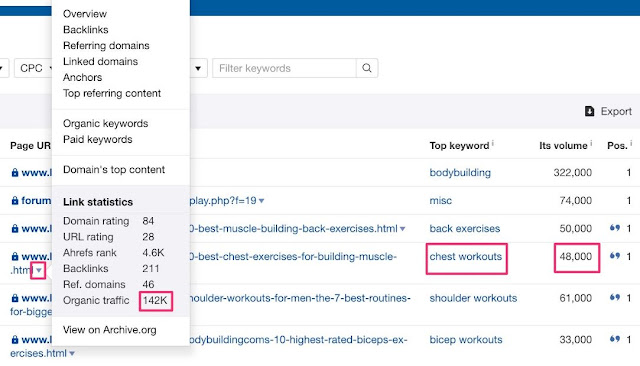


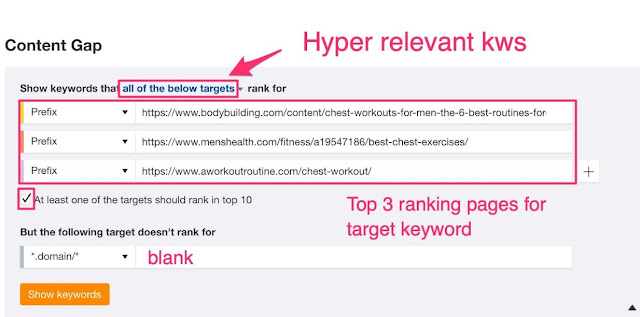






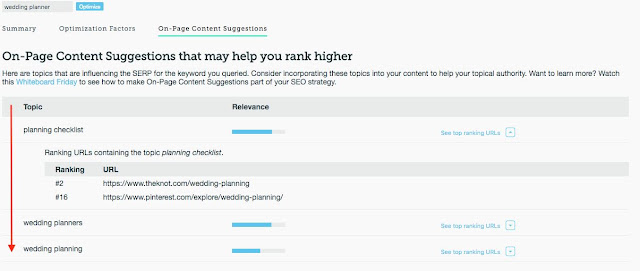
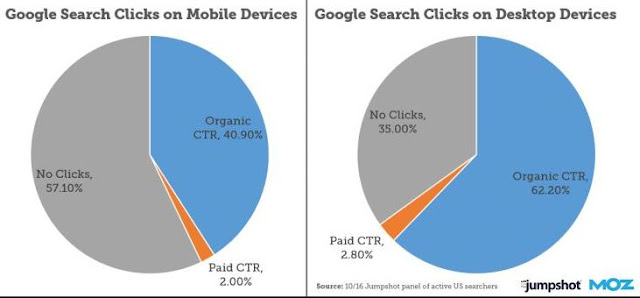

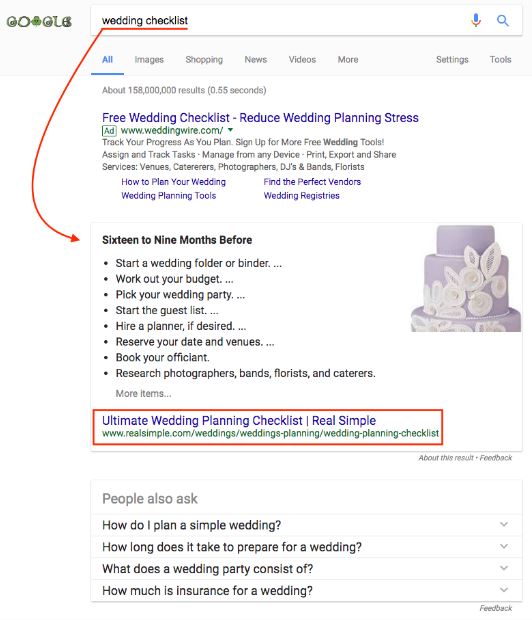



Hello! I just now would like to supply a massive thumbs up for any wonderful information you could have here within this post. We are coming back to your blog post for further soon. leading SEO consultant Singapore
ReplyDeleteI was pinning away for such type of blogs, thanks for posting this for us.
ReplyDeleteEliminate keywords which have search volumes so small that they could not generate enough traffic to our site to make them worthwhile. I usually toss keywords that have less than 3000 monthly global searches.keyword wrapper tool
ReplyDeleteGreat job for publishing such a beneficial web site. Your web log isn’t only useful but it is additionally really creative too. light therapy lamp
ReplyDeleteBut like many digital marketing practices, keyword research software and services can be really expensive, costing as much as a few hundred dollars per month.
ReplyDeleteEven if you are a running your own website or are thinking about purchasing cheap website hosting,Website Hosting in Kansas City
ReplyDeleteThis particular papers fabulous, and My spouse and i enjoy each of the perform that you have placed into this. I’m sure that you will be making a really useful place. I has been additionally pleased. Good perform! https://www.continental-delight.com.sg/
ReplyDelete